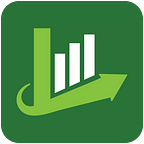What Is Technical Analysis?
Technical analysis is a method of investment evaluation to determine trading opportunities through the analysis of statistical trends. The involved elements include price movement and volume. This article covers some basic aspects of technical analysis so that you can better understand how it works and the best practices of its applications.
How Does Technical Analysis Work?
Technical analysis tools bring clarity to the supply and demand for security and will profoundly impact changes in price, volume, and implied volatility. The insights that technical analysis generates are the assumption based on the past trading activity and price changes of security.
Day traders and short-term investors favor technical analysis as it produces trading signals of the next market moves. Also, it enhances the evaluation of a security’s strength or weakness related to the broader market or one of its sectors.
Technical analysis was first known in late 1800 as Charles Dow introduced it along with the Dow Theory. Many other researchers contributed to the public recognition of this term and its application through their research, such as William P. Hamilton, Robert Rhea, Edson Gould, and John Magee.
The Applications of Technical Analysis
You can apply technical analysis to any security in combination with historical trading data. Specifically, you can use technical analysis to learn about the price actions of stocks, futures, commodities, fixed-income, currencies, etc.
Insights from the technical analysis can help you forecast price movements based on many underlying principles, such as the law of Supply and Demand, Effort vs. Result, etc.
Technical Analysis Indicators
Through years of using technical analysis, many analysts developed various types of trading systems for more accurate forecasts of price movements.
You cannot do it with bare hands but with many powerful indicators. There are many aspects that trading tools can help you point out, including
- Support and resistance areas.
- She strength of a trend.
- The likelihood of its continuation.
Some popular indicators that you should use to alleviate your analysis are:
- Price trends
- Chart patterns
- Volume and momentum indicators
- Oscillators
- Moving averages
- Support and resistance levels
If you want to update the latest news and have a detailed analysis of trading knowledge, follow our Medium page for insightful trading blogs.
Besides, you can also find us through other platforms such as:
- Website: libraryoftrader.net/
- Insta: instagram.com/libraryoftrader/
- Twitter: twitter.com/libraryoftrader
- LinkedIn: linkedin.com/company/library-of-trader/
- Telegram: t.me/libraryoftradercourse
